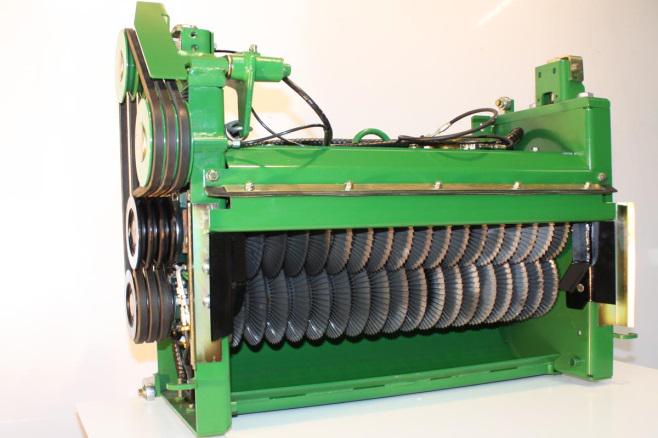Corn silage is typically one of the main components of dairy cattle diets, often comprising between 20 to 40% of the diet dry matter. Since corn silage makes up such a large proportion of the diet, the quality of the corn silage is very important and can have a substantial impact on milk production levels. Corn silage quality can be affected by dry matter at harvest, packing density, and bunk covering but can also be altered by kernel processing.

Kernel processing occurs at harvest where the corn kernels are broken apart into smaller pieces. The kernel itself is essentially a hard outer shell guarding the soft and highly digestible starch inside. If that outer shell is too tough, the cow will not be able to break through it and access the starch within. The kernels will pass through the cow unscathed and end up in the manure essentially wasting part of the nutritive potential of the corn silage. A kernel processor breaks the kernels, improves digestibility, and prevents these potential losses.
We now have the ability to measure how well the kernel is being processed and can utilize that when designing rations. The kernel processing score of corn silage provides a measure of how much of the starch is small enough to pass through a 4.75 mm screen. The goal behind the kernel processing score is to assess how well the corn kernels have been broken up as the smaller particle size provides more surface area for the rumen microbes to access the starch and will result in greater digestibility and better utilization of the silage.
To determine the kernel processing score, a sample of dried corn silage is placed on a screen and shaken for approximately 10 minutes. At the end of the shaking process, the percentage of the starch remaining on the screen as compared to the amount that falls through the screen is determined. Most kernel processing scores for corn silage fall between 50 and 70%. The higher the number is the better, and corn silage with kernel processing scores greater than 70% is ideal. Higher kernel processing scores indicate that the starch is going to be more accessible when it is fed to the cows and indicate that the silage will be more available. The increased availability should increase the utilization of the silage and will potentially result in greater milk production.

The kernel processing score can be used to help determine how well the kernels were broken up during the harvesting process and can be a useful tool for better understanding how well the silage is being processed.
Ideally, the kernel processing score helps to measure how well the corn silage was harvested to make sure that the corn silage is the best feed possible for the cows.

